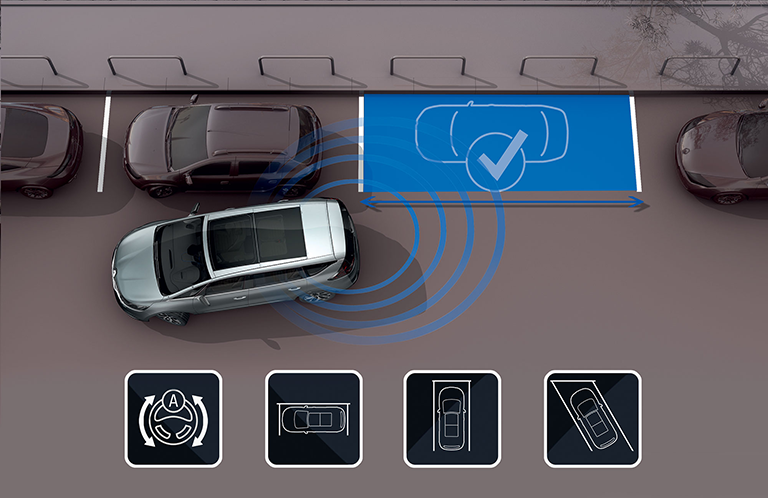
Renault’s Revolutionary One Pedal To Park Assist System
Share
The Renault Group has always considered innovation as one of the most important aspects of delivering cars people want to buy. A prime example is the wide range of driver-assist technologies introduced between 1990 and 2000. One innovation that could change the dynamic forever is the Advanced Park Assist system, also referred to as ‘One Pedal to Park’.
Developing The One Pedal to Park System
Since the brand was born over a century ago, Renault engineers have consistently conceived and developed automotive solutions to make driving more comfortable, practical and safe. Renault’s Advanced Park Assist system (One Pedal to Park) is the latest innovation that should interest any petrolhead and technology enthusiast.
Thanks to the continued efforts of talented Renault engineers, Jong-Hoon and Pape, they found a solution despite facing mounting challenges, including the ‘war of the buttons’. Here, the development team removed a button central to the One Pedal to Park system just two months before the end of the project.
Finding Solutions To The Design Challenges
With the cruise control/speed limiter button now on the steering wheel, they had to find space for the button on the central console. However, they did not take into account another new feature, the Autohold electronic parking brake which Renault believed took priority over the Advanced Park Assist system. While this presented a big problem, it did result in them coming up with the One Pedal to Park solution.
“The button, which was central to our innovation, was assigned to another project. They basically just took it from us” said Pape, Renault algorithm engineer, driver assistance systems.
Jong-Hoon, Renault’s system project leader of driver-assistance systems, added: “It’s simply unheard of to change concepts in just two months! Yet, we did it!”
What Is The Advanced Park Assist System?
From the first parking sensor in the mid-’90s, the rear parking camera and even a 360° camera a few years later, Renault managed to design a complete parking assist system. In addition to beeping alerts, drivers can now see the position of obstacles displayed on a multimedia screen fitted to the dashboard.
When Renault first fitted Easy Park Assist to the Espace 5 in 2015, the French automaker entered a new era. Drivers could activate the option which allowed the vehicle to find a suitable parking space, calculating the steering by itself and taking control of the wheel. All the driver needed to do was control the vehicle’s acceleration, braking and gear changes and the hand brake.
With a facelift of the Espace in 2019, Renault wanted to go even further in automating parking by designing its own park assist system. It would control the entire car from finding the right parking space to manoeuvring and switching off the engine. This Advanced Park Assist system would replace Renault’s Easy Park Assist that automates the entire process.
How Renault’s One Pedal to Park System Works
After Jong-Hoon and Pape overcame the challenges, their solution of using the accelerator pedal came to the fore. With Renault’s Advanced Park Assist, everything is automated and all the driver needs to do is keep their foot on the pedal to park.
The name One Pedal to Park captured the imagination of customers around the world and some were even invited to test the innovation and provide feedback. “We conducted user trials that brought back very positive results highlighting just how easy the system was to use,” said Pape.
Benefits Of The Advanced Park Assist System
In hindsight, the One Pedal to Park solution is better than the initial button concept and here’s why. Not only is it is easier to use but the accelerator pedal feels more natural than pressing a button.
It’s also safer as the driver can instinctively take their foot off the pedal if there is a problem. This includes a pedestrian or an animal walking behind the vehicle or another car approaching without warning.
The Advanced Park Assist system is enriched as the driver now controls the speed of the manoeuvre up to 7 km/h where previously, the speed was defined by the system. The One Pedal to Park system can be operated ‘on the fly’ which means you no longer have to wait until the vehicle stops to initiate the manoeuvre after an interruption.
Conclusion
The One Pedal to Park solution was developed in a record time of only two months. Under normal circumstances, this type of technology would take about two years to develop according to Jong-Hoon. The patent was filed immediately and the system architecture and operation were attributed to Jong-Hoon and the algorithm to Pape.
Pape stated that “using the pedal enabled us to go further than the button, moving from an on/off function to progressive control. It’s been a bit of a bumpy road, a real challenge. But everything that happened led us to develop a solution that is even better than our initial idea.”
Renault deemed the One Pedal to Park system as complete and so practical in the Espace that they applied it exactly as is in the New Renault Mégane E-TECH Electric. It offered Pape and Jong-Hoon explicit recognition of their hard work to develop a technology that is both invisible and intuitive, perfectly suited to the minimalist, streamlined interior of the new model.
References: www.group1renault.co.za
